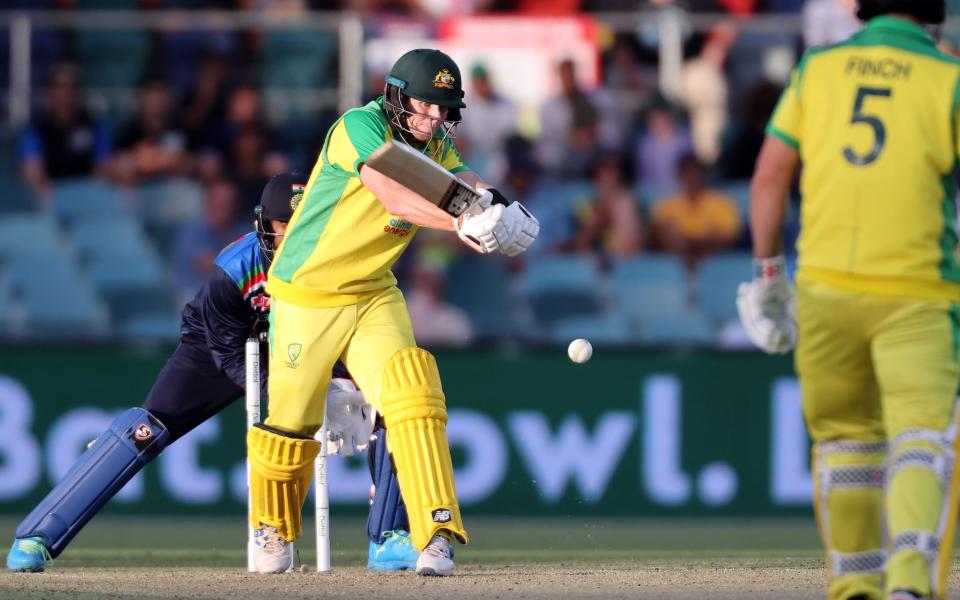Cricket World Cup Super League holds out promise of being step to greater fairness in international game

Five years ago, Pakistan were worried that they would miss out on qualification for the Champions Trophy, and the West Indies would clinch the berth instead. There was only one thing for it: they had to cancel their upcoming one-day internationals in Zimbabwe. By doing so, Pakistan could prevent themselves from losing ranking points and missing out on Champions Trophy qualification.
The only defence for the Pakistan Cricket Board’s actions is that every other board would have acted in the same way. The same is true of other sports: Wales and Poland famously gamed FIFA’s rankings by realising that teams stood to lose points by playing friendlies, helping them rise up the rankings and get kinder draws. But the PCB’s actions showed, once and for all, that deciding qualification for global events by rankings is nonsensical and unfair.
All of which helps explain why England are currently in South Africa for their second limited-overs tour of the year, and about to play a three-game ODI series to go with the one they played in February. The first series was part of a standard bilateral tour, taking in games in all three formats. This series is different: the three games are part of the 2020-22 edition of the Cricket World Cup Super League. This features 13 sides, who will each play 24 games - three-match series against eight different opponents.
The tournament started in the summer, with England’s series against Ireland, but the launch was understandably overlooked. Only six teams have yet played any games in the competition - South Africa will become the seventh on Friday.
As cricket’s awkward middle sibling, the ODI has often felt short of love. While the format has been eminently capable of producing gripping cricket in the World Cup, too many games in between competitions have meant too little, with sides resting players and a meandering schedule driven by commerce not cricketing needs. As ESPNCricinfo’s Dan Brettig has observed, Australia essentially ceased taking ODIs seriously for three years after the 2015 World Cup, at times short-changing fans by resting their entire first-choice bowling attack. The Super League creates a new imperative to treat these games as serious international fixtures: with their full strength attack, Australia have already secured series wins against England and India to top the table.

The real intrigue is likely to be towards the bottom of the table, with the race to sneak into the eight World Cup qualification spots. The top seven teams, as well as hosts India, will qualify for the 2023 World Cup, with the remaining berths determined by a cut-throat qualification tournament. The side to finish bottom of the 13 nations will be relegated if they finish below the winners of League Two - comprising Scotland and the next batch of countries - during the World Cup qualifier. Meritocracy has too often been anathema to international cricket, with fixtures and funding determined by the Victorian notion of ‘status’, rather than on-field performance, but this system is an important step towards introducing greater merit and accountability to international cricket.
One quirk of the schedule is actually that it is manifestly unfair towards the biggest nations. The Super League schedule was predominantly wrapped around existing bilateral fixtures, rather than devised from scratch. Larger countries have essentially opted for better opponents - and the greater broadcasting revenue they will bring - over an easier schedule. While England - despite an indifferent start that saw them win only three of their six matches at home to Ireland and Australia last summer - are surely too strong not to qualify with ease regardless, the inequities in the fixture list could put some established forces in jeopardy.
Consider the fixture lists of Ireland and South Africa. While Ireland avoid Australia, India, Pakistan and Sri Lanka - ranked second, fourth, sixth and eighth respectively - South Africa will avoid New Zealand, the West Indies, Afghanistan and Zimbabwe, a quartet ranked third, ninth, 10th and 14th. So South Africa will swiftly find themselves under pressure if they flounder in their opening two series, against England and Pakistan, with arduous series in Australia and India to come. Conversely, should Ireland pick-up a few more upset victories to go with their heist at the Ageas Bowl, then if they can dominate similarly-ranked sides - Afghanistan, the Netherlands and Zimbabwe - they have every chance of reaching the 10 or so wins likely to be enough for a top-eight berth. Other less established sides will be spying the same opportunity: Zimbabwe sealed a notable win in Pakistan last month.
There still remains a sense of opportunities unrealised. The Super League is a league in which not everyone plays everyone else. There is no final series between the top two teams. As the IPL does, the Super League could have introduced an orange and purple cap - worn by the leading run-scorers and wicket-takers in each edition, and adding to the sense of all matches being part of something greater.
So there is ample scope for the Super League to evolve into something more satisfactory. But, for all its flaws, it is far easier to comprehend than the World Test Championship - and a marked improvement on the disjoined structure that existed before. It holds out the promise of being a significant step to create greater context and fairness in the international game.

